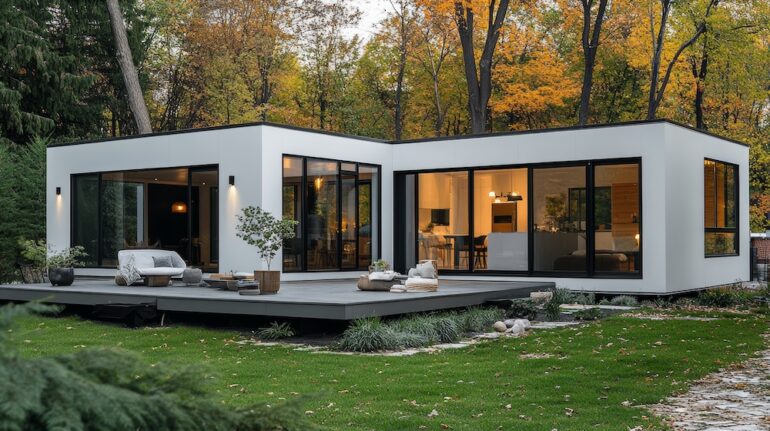For many, an alternative to costly housing has renewed interest in the three Ms: modular, mobile, and manufactured housing. The housing industry has swung from the Great Recession in 2008 to the price mania of 2022 to a dramatic slowdown in 2024 (due to rising inflation and interest rates). All of the three Ms can be less expensive than homes built on-site. How do they differ?
Defining the three Ms in housing
All three Ms—modular, mobile, and manufactured housing—fall under prefabricated housing.
Modular homes are factory-built, but the key difference is that once the house is moved on-site, it is set upon a permanent foundation and cannot be moved again. This type of home can be placed on a slab foundation, have a basement, and even have two stories.
Modular home-quality standards are typically set by the local and state building codes where the house will be placed, and these standards can vary by jurisdiction.
Mobile or manufactured homes are built according to factory requirement standards set by HUD. Under HUD regulations, manufactured housing is the official term for a house built in a factory on a chassis with wheels rather than being constructed on-site.
Commonly called a mobile home, this type of house is movable to its location and movable again if needed. Once on-site, the wheels can be removed or covered with a skirt. These homes come in single, double, or triple sections assembled on the property. If the home is moved later, it is split into original parts and reassembled on its new site.
Pros and cons of modular, mobile, and manufactured housing
The most significant advantage of factory-built housing is affordability. The factory construction process is not subject to conditions that can drive up the price, delay completion, and create issues with local building inspections. It is a more efficient operation that reduces costs.
Like site-built homes, buyers are offered various customizable choices in floor plans, paint colors, flooring, cabinets, colors, hardware, and more.
Though building in the factory is more efficient, moving the sections to the home site incurs transportation costs: the specialized moving vehicle and crew, a pilot vehicle many states require to accompany the move, and the location of routes that allow the home to clear overpasses and overhead power wires.
Financing for modular homes can be challenging. The builder may require a substantial down payment or full payment in advance. The house may have to be built using a construction loan, which can be converted into a regular mortgage after completion. Finally, weather awareness is essential for those living in these homes.
Related – Modern Mobile Homes Are an Affordable Option


